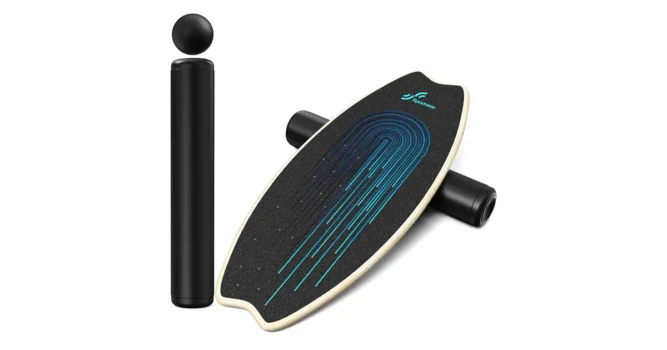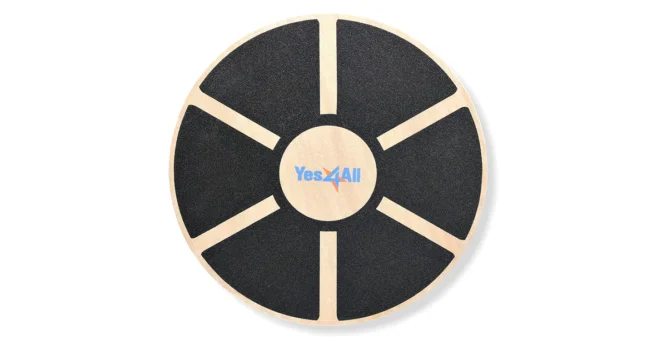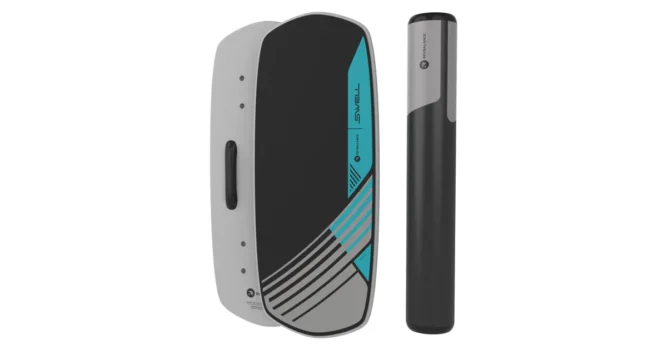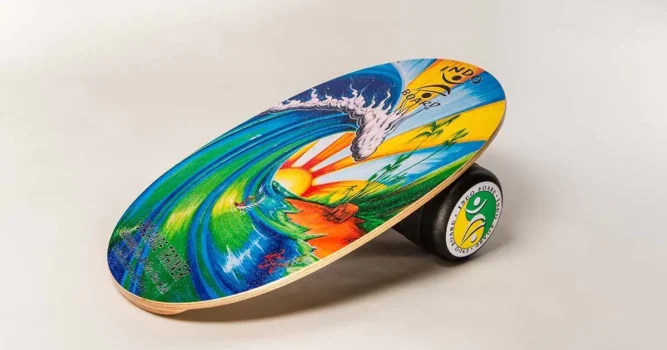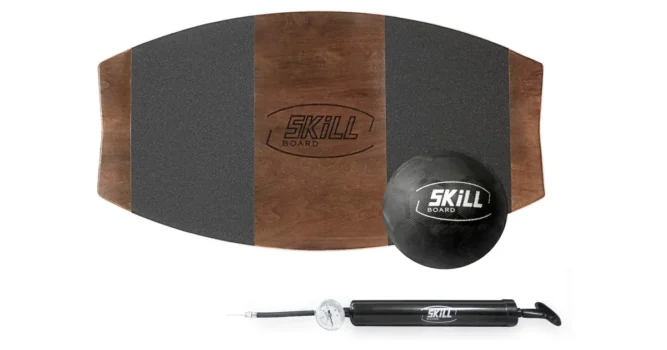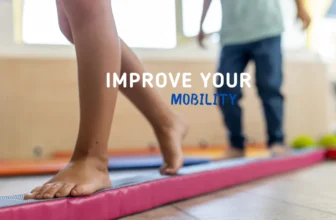Introduction
Balance boards are dynamic and versatile fitness tools designed to help you improve your balance, stability, and overall physical fitness. Whether you’re an athlete, a fitness enthusiast, or someone rehabilitating from an injury, incorporating balance board training into your routine can benefit you in numerous ways. In this comprehensive guide, we’ll explore the purpose of balance training, the importance of duration for balance board exercises, and how to optimize your training sessions.
Regarding balancing duration, it’s crucial to understand that consistency in your sessions, rather than their duration, is essential to your overall success. Training too long can lead to overtraining, ultimately affecting consistency and your progress.
To help you get the most out of your balance board training, we’ll cover the benefits of incorporating this tool into your routine, the different types of balance boards available, and how to determine the ideal session length based on various factors. We’ll also discuss safety tips, common mistakes to avoid, and how to maximize your balance board training for the best possible results. By the end of this guide, you’ll have a solid understanding of how to effectively use balance boards to enhance your overall fitness and well-being.
Benefits of balance board training
Incorporating balance board training into your fitness routine can yield a wide range of benefits, including:
- Improved core strength: Balance board training engages your core muscles, which are crucial for good posture, injury prevention, and overall physical health. Challenging your stability and balance forces your core muscles to work harder, leading to increased strength and endurance.
- Enhanced coordination and stability: Training on an unstable surface like a balance board forces your body to maintain stability, improving your balance, coordination, and motor skills. These improvements can translate to better performance in sports like surfing, snowboarding, wakeboarding, and other physical activities and a reduced risk of falls and injuries.
- Injury prevention and rehabilitation: Balance boards are often used in physical therapy to help patients recover from injuries and prevent future issues. Regular balance training can also help reduce the risk of falls, particularly in older adults. By strengthening the muscles and connective tissues that support your joints, you can decrease your risk of injury during everyday activities and sports.
- Better posture: Strengthening your core muscles and improving your balance can lead to better posture, reducing the strain on your spine and joints. Improved posture helps alleviate back pain, improves your overall appearance, and increases your confidence.
- Increased focus and concentration: Balance board exercises require mental focus and concentration, helping you develop better mind-body awareness and control. This mind-muscle connection leads to improved performance in both physical and mental tasks, as well as a greater sense of well-being.
- Boosted athletic performance: Improved balance, coordination, and core strength can translate to better performance in various sports and physical activities. Athletes who incorporate balance board training into their routines may experience increased agility, faster reaction times, and better overall performance.
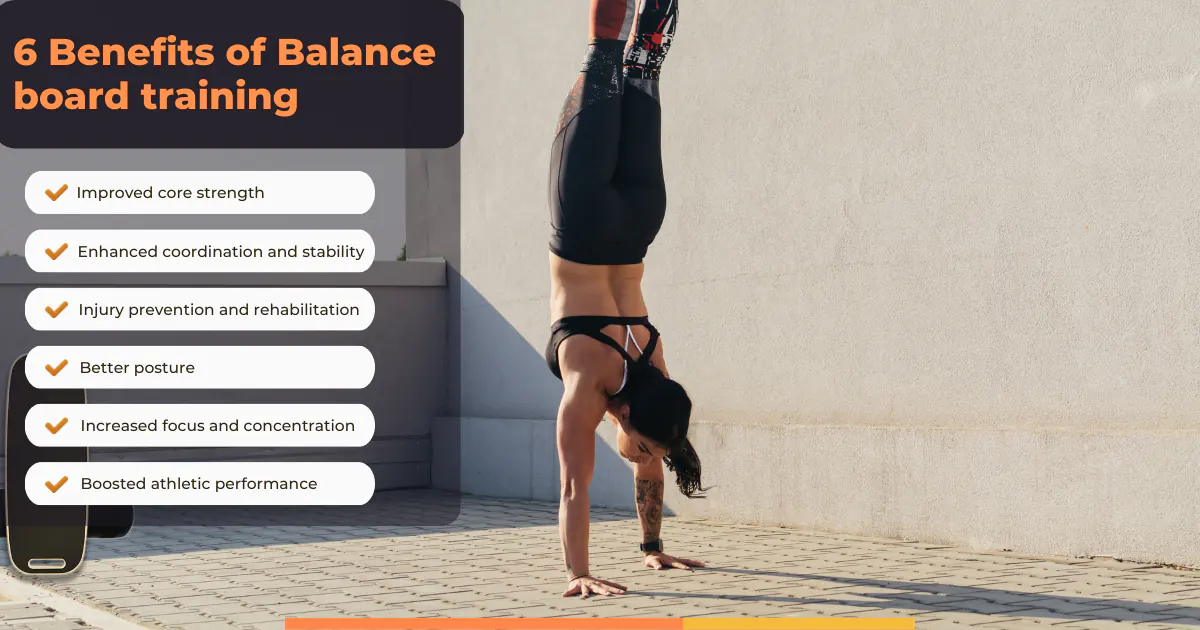
Understanding balance board types
There are several types of balance boards, each offering different levels of difficulty and benefits:
- Wobble boards: feature a single pivot point at the center, allowing for multi-directional movement. They suit beginners and those looking to improve their balance and stability. Wobble boards can help develop core strength, proprioception, and coordination.
- Rocker boards: have a single axis of movement, rocking back and forth along a curved base. They provide less challenge than wobble boards, making them suitable for individuals who feel uneasy or uncomfortable in attempting balancing.
- Roller balance boards: Roller boards consist of a flat board that rests on a cylindrical roller, providing a more advanced level of instability. These boards require greater control and coordination to maintain balance, making them ideal for intermediate to advanced users. Rollerboards can help enhance core strength, balance, and proprioception.
- Inflatable balance discs and cushions: offer adjustable difficulty levels by changing the amount of air inside. The best feature about these trainers is that you can use them for seated, standing, or even lying exercises, and they are suitable for users of all fitness levels.
How different types affect training duration
The type of balance board you pick will significantly impact the duration of your training sessions. For example, wobble boards or inflatable cushions mainly depend on your endurance as they target leg muscles more than challenge your balancing abilities. In contrast, a roller or sphere balance board primarily relies on your balancing abilities rather than your fitness.
Factors to consider when determining session length
When determining the ideal session length for your balance training, consider the following factors:
- Individual fitness level and experience: Beginners may need shorter sessions to maintain proper form and avoid overtraining. As you gain experience and improve your balance, you can gradually increase the duration of your sessions.
- Type of balance board: As mentioned earlier, different balance boards offer varying levels of difficulty. Choose a session length that aligns with the type of balance board you’re using and your current fitness level.
- Specific training goals: Your balance board training goals can also influence session length. For example, if you’re focusing on rehabilitating an injury or improving balance for a specific sport, you may need longer sessions to see the desired results.
- Time constraints and schedule: Consider how much time you have available for balance board training and adjust your session length accordingly. Shorter, more frequent sessions can still yield significant benefits if you’re consistent with your training.
- Age and physical limitations: Older adults or individuals with physical limitations may need to adjust session length to prevent overexertion or injury. It’s essential to listen to your body and modify your training as needed.
Recommended session lengths for different scenarios
- Beginners: If you’re new to balance board training, start with shorter sessions of 1-5 minutes to maintain proper form and prevent overtraining. Gradually increase the duration as you become more comfortable and proficient. As mentioned initially, frequency is the key. Try squeezing those short balance board training sessions daily rather than overdoing them. This will help you see consistent progress while minimizing the risk of overtraining or injury.
- Intermediate users: As you become more experienced, you can incorporate progressive overload principles into your training by gradually increasing session length, incorporating additional exercises, or switching to a more challenging balance board. A typical session length for intermediate users is 10-30 minutes, depending on your goals and the type of balance board you use.
- Advanced users: For advanced users, balance board training sessions can range all across the board, depending on the exercises or tricks performed.
How to maximize your balance board training
To get the most out of your balance board training, consider the following tips:
- Do a warm-up: Have you ever slipped on some ice, did not fall but felt that strain or spasm in your back, maybe even days after the slip? Be aware that you might find yourself in a similar feeling when starting to train on balance boards, there for a simple warm-up is recommended, especially for beginners.
- Varying exercises and difficulty levels: To continue seeing progress and prevent boredom, mix up your balance board exercises and difficulty levels and some new movements, pick a balance board trick from youtube, set it as your long-term goal, and start practicing.
- Consistency and frequency: We already mentioned before that consistency is the key to an outstanding balance. Even if you can only train on a balance board for 3-5 minutes today, do it. It’s going to make a change in the long run.
- Listening to your body and avoiding overtraining: Pay attention to your body’s signals and avoid pushing yourself too hard. Overtraining can lead to injury, burnout, or a decrease in performance.
- Tracking progress and goals: There’s an interesting learning curve with balance boards. In the beginning, it’s hard to balance out a minute on it, but quickly you reach a point where you can easily stand still on the board for an hour, there for it’s good to look for some exciting moves to master, set them as your goals, practice them and ultimately track your progress.
Common mistakes and how to avoid them 🚫
To ensure you’re getting the most out of your balance board training, be aware of these common mistakes and how to avoid them:
- Ignoring fatigue or pain: Pay attention to your body’s signals and stop your sessions if you feel excessive fatigue or pain. Pushing through discomfort can lead to injury or overtraining. As we stressed previously, doing balance training frequently and consistently is more important.
- Relying solely on balance board training: While balance board training provides plenty of benefits, merely standing on the board will not build you muscle or will do it quite slowly. So it’s necessary to combine balancing with other types of exercise into your routine for a well-rounded fitness program.
- Recovery time: Since balancing on a balance board is a relatively simple exercise, sometimes you can go overboard while training long or multiple times a day. Don’t ignore your body signals; spend some days resting if you’ve overdone it.
- Quitting after not progressing: If you’re anything like most people, you’ll quickly progress initially but then plateau for a while. That’s when most people shift from “I’m doing it and learning so much!” to “I’m doing it, but everyone seems able to do it better!”. Don’t get discouraged. It’s just the standard complex skill learning curve, and with some time, I’ll start to pick back up.
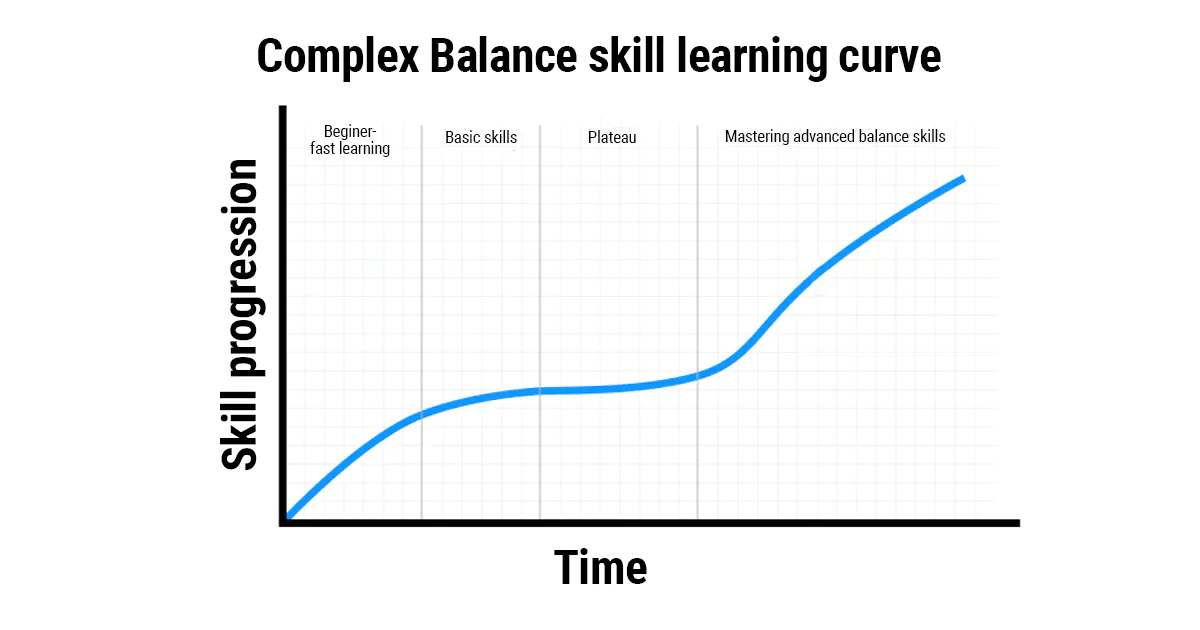
Safety tips for balance board training
To ensure your balance board training sessions are safe and effective, follow these tips:
- Choosing the right environment: Train in a clutter-free area with plenty of space to move around. This will help prevent accidents and allow you to focus on your exercises.
- Using appropriate footwear or going barefoot: Depending on the type of balance board you’re using, it may be more comfortable and secure to wear athletic shoes or go barefoot. Choose what works best for you and allows you to maintain proper form.
- Utilizing support if necessary: If you’re new to balance board training or have difficulty maintaining stability, use an asset like a wall, chair, or a friend to help you maintain balance while you build strength and confidence.
Conclusion 🏁
When it comes to balancing training and how long you should balance, we can only take a moderate approach. The optimal duration for your sessions will depend on your fitness level, experience, goals, and the type of balance board you’re using. However, we covered some general rules:
- Start with shorter sessions and gradually increase the duration as you become more comfortable and proficient.
- Research different balance trainers to find the one that mostly aligns with your goals.
- Experiment with exercises and session lengths to find what works best for you, but remember warm up and listen to your body to prevent overtraining or injury.
- Patience, progression, and consistency are the main rules for improving your balancing abilities, core strength, enhanced coordination, and boosted athletic performance.
If you ever feel like you’ve reached a plateau, remember that it’s a common occurrence, and with time and practice, you’ll start seeing progress again. Balance training is a lifelong pursuit that can provide benefits at any age or fitness level.
So if you still need to get a balance board, go check out our balance board reviews, and if you already have one, start training and improving your balance today! 🤸♀️💪🏼
- Evert Verhagen, Allard van der Beek, Jos Twisk, Lex Bouter, Roald Bahr and Willem van Mechelen. The effect of a proprioceptive balance board training program for the prevention of ankle sprains: a prospective controlled trial Am J Sports Med . 2004 Sep;32(6):1385-93. doi: 10.1177/0363546503262177
- Andrea Fusco , Giuseppe Francesco Giancotti , Philip X Fuchs , Herbert Wagner , Carlo Varalda and Cristina Cortis. Wobble board balance assessment in subjects with chronic ankle instability
- Anna Brachman, Anna Kamieniarz, Justyna Michalska, Michał Pawłowski, Kajetan J. Słomka and Grzegorz Juras Balance Training Programs in Athletes – a Systematic Review
- Thomas Michell, Scott E Ross, J. Troy Blackburn, Christopher J Hirth and Kevin M Guskiewicz Functional Balance Training, With or Without Exercise Sandals, for Subjects With Stable or Unstable Ankles

